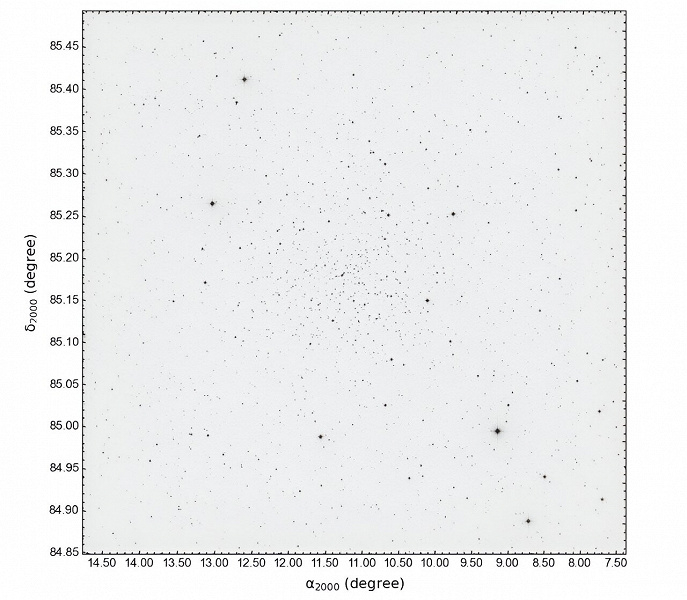By combining various data, scientists unravel the mysteries of the stellar population of NGC 188
Using data from the European Space Agency's (ESA) Gaia spacecraft, a team of astronomers from Turkey and India examined NGC 188 — an old open star cluster in our galaxy. The results of the study provide important information about the parameters and properties of this star cluster.
«Open clusters», formed from the same giant molecular cloud, are groups of stars weakly gravitationally bound to each other. At the moment, more than 1,000 such objects have been discovered in the Milky Way, and scientists continue to search for more, hoping to find many such stellar groups. Expanding the list of known galactic open clusters and studying them in detail could be important for improving our understanding of the formation and evolution of our galaxy.
NGC 188 (also known as «Melott 2» or MWSC 0074) — it is a galactic open cluster estimated to be several billion years old. Considering that the cluster is located in a relatively lightly polluted region of the Milky Way, it is an excellent object for detailed observations.
However, many parameters of NGC 188 still remain uncertain, as previous studies indicate different results. That is why a group of astronomers led by Deniz Cennet Dursun from Istanbul University decided to take a closer look at this open cluster. They analyzed photometric, astrometric and spectroscopic data from an archival set of observations «Gaia Data Release 3» (DR3) to resolve inconsistencies in historical data sets.
«The goal of this work is to determine the fundamental parameters defining the old open cluster NGC 188, using advanced analytical techniques such as isochrone matching and SED [spectral energy distribution] analysis», & ;mdash; researchers write.
First, the team identified the 868 most likely member stars of NGC 188 (within a maximum radius of 15 arcminutes), of which 19 were blue strugglers. (BSS). Based on this sample, they determined the properties of the cluster.

The study found that NGC 188 is a member of the Milky Way's thin disk component and orbits in a quasi-circular orbit beyond the solar circle with an orbital period of about 259 million years. Data indicate that the region where the cluster formed is outside the solar circle.
According to the paper, NGC 188 is about 7.7 billion years old and has a metallicity of -0.03 dex. The distance to the cluster was estimated to be approximately 6000 light years.
The study also showed that the determined effective temperatures and surface gravity of the members of NGC 188 are in good agreement with predictions based on stellar evolution models for different luminosity classes.
According to the authors of the article, their study demonstrates that with an increase in the amount of photometric data, the fundamental astrophysical parameters of open clusters can be determined with greater accuracy.

